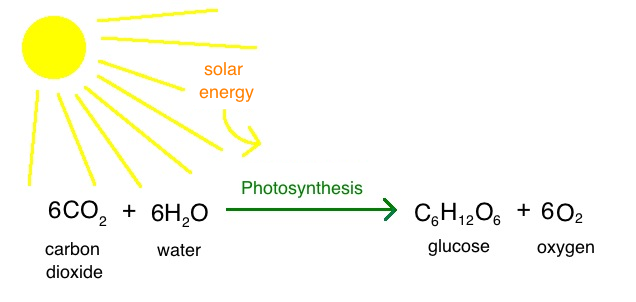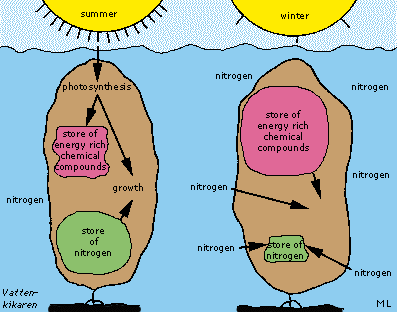The giant kelp grows best on rocky shorelines along the Pacific coast where there are clear and nutrient-rich waters. Providing clear water for kelp is extremely important so that sunlight penetrates to the seafloor where its life begins. The temperature of these waters is between 42 and 72 degrees Fahrenheit. It does not thrive well in warm waters, instead, it prefers cold water where upwelling occurs most often. Upwelling is when deeper waters displace the surface waters and mixing occurs, allowing nutrients that have sunk to the bottom to rise. The bold line along the coast of California in the image below represents giant kelp forests.

http://www.fao.org/tempref/FI/CDrom/aquaculture/a0845t/volume2/docrep/field/003/ab730e/AB730E04.htm
The giant kelp is known to grow as much as 20 inches per day and, therefore, is known as one of the fastest growing organisms on earth. How you may ask? The brown algae reproduce by the means of flagellated spores and gametes. There are two stages brown algae exist in: first as spores, which are released from the parent as male or female plants that will make sperm or eggs and these fertilize to form the second stage as a mature plant.
The mature plant mostly grows from a structure at the tip of its blades, which contain apical cells. As these apical cells divide, they turn into all the tissues of the algae resulting in vertical growth of the kelp.
Giant Sea Kelp can reproduce both sexually (producing both egg and sperm gametes) and asexually (by fragmentation of plant parts). I am going to focus on its sexual reproduction abilities. The life cycle of a Macrocystis pyrifera switches back and forth in an alternation of generations between a macroscopic diploid sporophyte (spores) and microscopic haploid gametophytes (sex cells). Spores, as mentioned before are carried away from the parent plant by water currents and their own flagella, which appears in 6 to 12 month old sporophytes. Once a suitable surface for germination is found by the sporophyte, they go on to form germ tubes. The sporophytes will migrate down this germ tube and in the process will produce its first gametophyte cell. This cell will differentiate into male antheridia from which the sperm cells will originate or female oogonium from which the egg cells will originate (Figure below). Next, a sperm will attach to an egg cell to form a zygote, which undergoes rapid cell division to form the early sporophyte pictured below. If for some reason the sperm and egg detach, the cells can still continue to search for another. Continued cell division will result in the growth of an adult sporophyte. (http://www.fao.org/3/x5819e/x5819e0a.htm)


https://slideplayer.com/slide/4967655/
A single blade can produce up to 500,000 spores an hour. The spores are propelled by two flagella and often settle within a few meters of their release. These motile spores tend to swim actively towards sources of nutrients needed for growth, such as nitrogen. (https://sanctuarysimon.org/dbtools/species-database/id/40/macrocystis/pyrifera/giant-kelp)
Giant kelps are photo-autotrophs, meaning they produce their own nutrients and energy using sunlight. During the summer when there is sufficient sunlight, the kelp stores energy-rich compounds through the process of photosynthesis. During the winter when there is a shortage of sunlight, nitrogen concentrations are higher. This plant has learned to use nitrogen during the winter by breaking it down and creating energy from it to continue growing. Some of the nitrogen that is absorbed during the winter is consumed directly, while the excess is stored until the summer when light is again abundant. The most common forms of nitrogen kelp have been known to use are nitrates and ammonium.


https://www.vattenkikaren.gu.se/fakta/arter/algae/phaeophy/lamisacc/lamisa3e.html
https://www.animates.co.nz/fishcare-nitrogencycle
Below you will find a link to a live webcam of giant kelp at the Monterey Bay Aquarium!
https://www.montereybayaquarium.org/animals-and-exhibits/live-web-cams/kelp-forest-cam